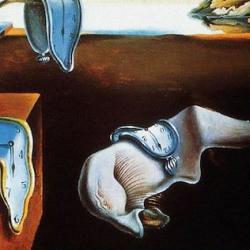JT Fraser begins one of his essays in Time and Time Again with this lovely sketch of a musical cosmology:
“The noble English art of change ringing consists of the ringing of a set of bells of different pitches, according to sequences that follow stable mathematical patterns. A set of rings, so ordered, is called a change. The maximum number of changes possible with a given set of bells is called a peal. When the changes employ five bells, a peal consists of 120 rings. The number of peals that may be rung with twelve bells is 79,001,600. With 15 bells it is 1,307,674,368,000.
“The experience of hearing a long peal leaves the listener with a feeling of having been immersed in ceaseless change. The mind seeks a temporal pattern – a repeated melody, a repeated distinct rhythm – but finds none, unless the peal itself ends and gets repeated. In the case of twelve bells, the time needed to ring a complete peal has been calculated as forty years of ringing, day and night. For most of us, this is too long a period to test for the repetition of a pattern.
“Change ringing is an acoustic model for the coexistence of being and becoming in the nature of time: the mathematical rule followed by the bell ringers is stable, unchanging, beinglike. But the peal heard ceaselessly changes. It is becominglike. The universe is calculated to have about 1081 particles. If we think of the cosmos as change ringing, using each of its particles as a tuned bell, the demiurgos of Plato – the craftsman who created the world according to unchanging laws—will need a long period to listen for the complete cosmic peal rung by all those bells.”














